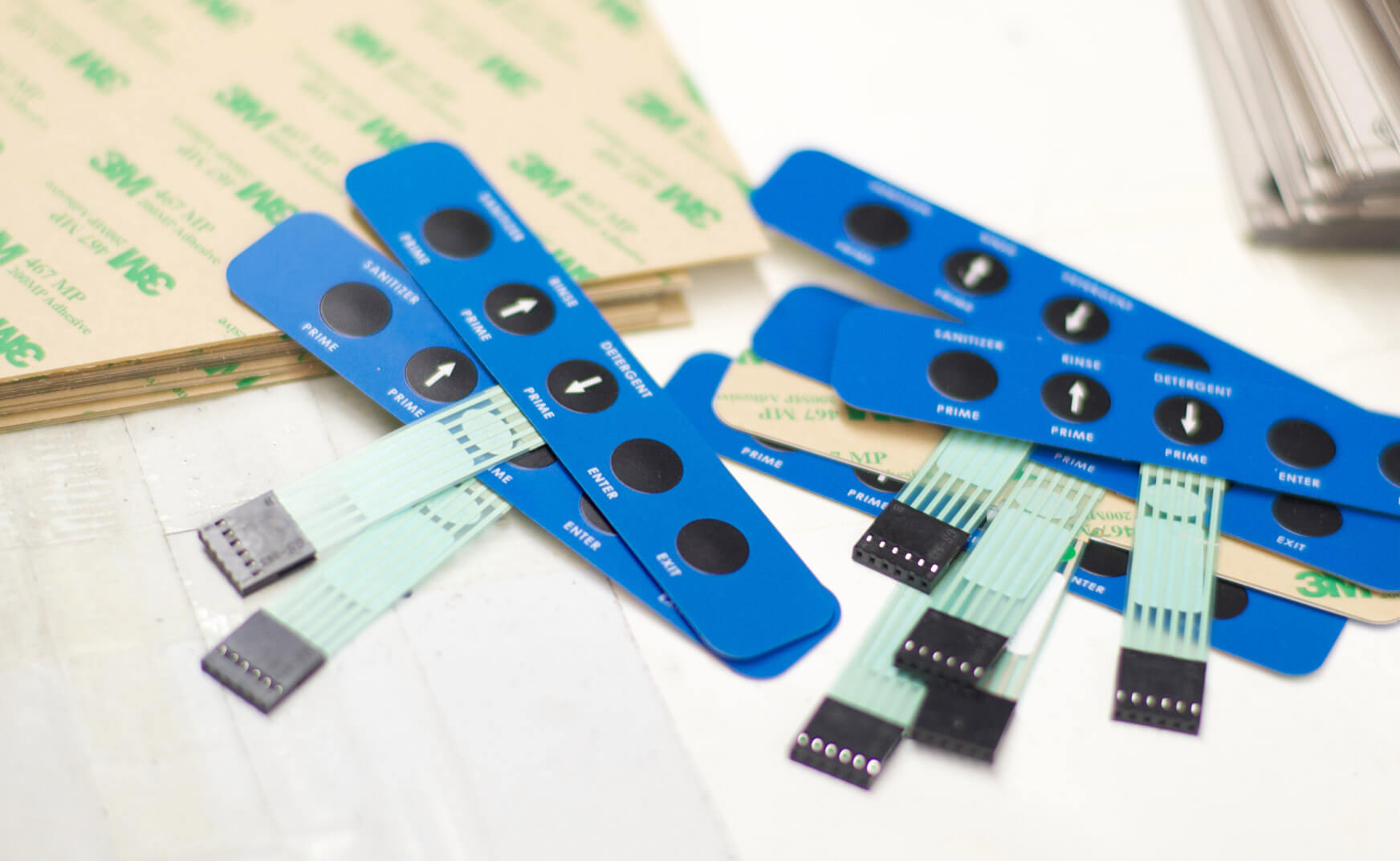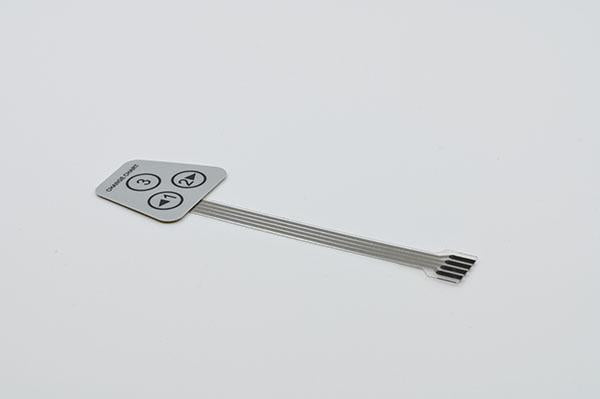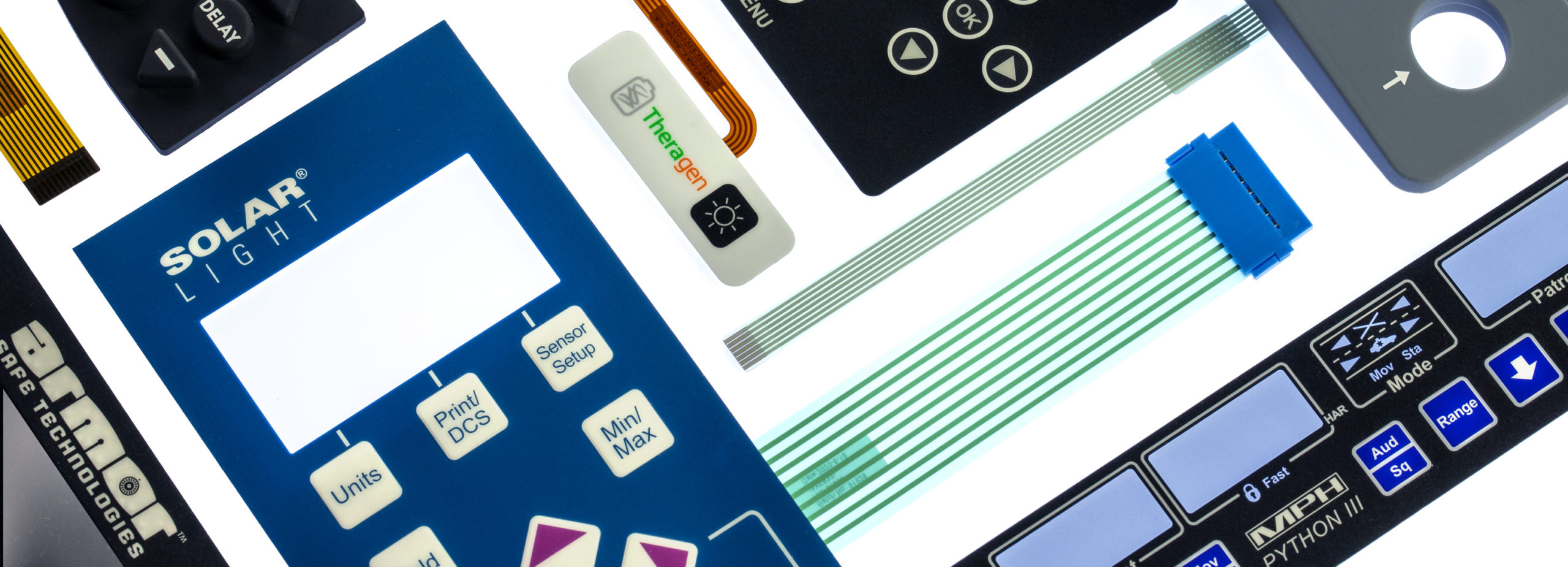Recognizing the Importance of Membrane Switches in Individual User Interfaces
Membrane buttons are indispensable components in the layout of reliable customer interfaces, facilitating not only functionality however additionally improving visual charm and individual communication. Their special attributes, such as resistance to adjustable designs and ecological variables, make them suitable for a varied array of applications across several sectors. As we explore the future patterns and different advantages related to Membrane modern technology, it becomes clear that these switches are greater than simply elements; they represent a merging of innovation and practicality. The ramifications of this modern technology on individual experience are worth examining better.
What Are Membrane Buttons?

The spacer layer, which includes adhesive residential or commercial properties, permits the splitting up of the circuit layer from the overlay, guaranteeing that the button stays in a non-activated state until pressed. When pressure is put on the overlay, it presses the spacer layer, linking the void and finishing the circuit in the underlying layer. This style not only minimizes the physical area required for conventional mechanical switches but likewise boosts the sturdiness of the tool, as Membrane buttons are generally resistant to dirt, dampness, and various other ecological aspects.
Generally discovered in applications varying from customer electronic devices to clinical devices, Membrane buttons are integral to modern technology, supplying a straightforward and reliable user interface that straightens with contemporary design needs.
Advantages of Membrane Buttons
While various button modern technologies exist, Membrane Switches offer distinctive advantages that make them especially desirable in various applications. Among the main benefits of Membrane buttons is their compact style, which enables space-saving executions in gadgets where actual estate is restricted. Their thin profile not just enhances visual charm however also helps with lightweight construction.
One more substantial advantage is their resistance to environmental factors. Membrane buttons are normally sealed against moisture, dirt, and contaminants, making them suitable for usage in requiring settings, such as clinical devices and industrial devices. This longevity prolongs the lifespan of the button, minimizing maintenance costs and boosting dependability.
Furthermore, Membrane switches can be customized to satisfy specific design requirements, integrating unique graphics and colors that enhance individual communication. Their tactile feedback alternatives can additionally be tailored to offer a rewarding user experience. In addition, Membrane buttons are cost-efficient, specifically in high-volume applications, as they can be created effectively.
Applications in Numerous Industries

In the consumer electronic devices industry, Membrane switches are prevalent in gadgets such as microwaves, washing devices, and remote controls. Their responsive responses and visual choices enhance user experience while offering a sleek, contemporary look. Additionally, vehicle producers make use of Membrane switches in dashboard controls and infotainment systems, where space is restricted, and individual involvement is crucial.
Furthermore, the industrial field leverages Membrane switches in control panels for equipment and equipment, permitting instinctive operation in commonly extreme environments. Their resistance to chemicals and moisture guarantees longevity and reliability in these applications. In general, the adaptability of Membrane Switches contributes substantially to their extensive usage, making them important in numerous technological domains.
Design Factors To Consider for Membrane Buttons

When making Membrane switches, numerous essential factors to consider must be taken into consideration to make certain optimal performance and user experience. Firstly, the option of materials is vital; choosing durable, top quality substratums can improve the switch's longevity and resistance to ecological factors such as moisture and temperature level variations.
Secondly, the layout of the visuals overlay must focus on quality and convenience of use. Icons and message must be understandable, and the format needs to facilitate instinctive interaction (membrane switches). Furthermore, tactile responses is necessary; including a responsive dome or various other systems can boost the customer experience by giving physical verification of activation
An additional important element is the button's electric efficiency. Developers need to ensure that the conductive traces are correctly developed to reduce resistance and prevent signal go to this site interference. This involves examining the required actuation force and making sure compatibility with the electronic components they will certainly interface with.

Future Fads in Membrane Innovation
As technology proceeds to breakthrough, Membrane buttons are poised to advance substantially, driven by developments in products and making methods. One arising pattern is the consolidation of advanced materials, such as conductive inks and versatile substrates, which boost durability and lower the total weight of Membrane buttons. These materials not just boost the responsive action yet also permit the style of buttons that can hold up against harsher environmental problems.
Moreover, the assimilation of touch-sensitive innovations is changing traditional Membrane Switches right into even more interactive interface. Capacitive touch sensing units embedded within Membrane button panels can supply a much more intuitive and receptive user experience, lining up with the growing demand for sleek, modern-day layouts in consumer electronics.
In addition, improvements in from this source printing methods, such as electronic and 3D printing, allow rapid prototyping and modification of Membrane switches. This adaptability permits producers to react quicker to market needs and consumer choices.
Lastly, sustainability is coming to be a substantial focus, with makers exploring green products and processes. As these patterns unfold, the future of Membrane technology promises enhanced performance, visual allure, and environmental duty, strengthening their function in sophisticated customer interfaces across different markets.
Verdict
In verdict, Membrane Switches represent a vital part in the design of individual interfaces, integrating performance with visual flexibility. As innovations in modern technology proceed, the development of Membrane buttons is expected to additional improve user interfaces, driving innovation and enhancing functionality in an increasingly intricate technical landscape.
Membrane switches are important parts in the style of efficient customer interfaces, promoting not only functionality but likewise improving aesthetic appeal and user interaction.Membrane Switches offer as an important website link component in numerous individual interfaces, helping with a seamless communication between users and digital tools.While many switch modern technologies exist, Membrane Switches deal unique benefits that make them particularly desirable in different applications.Moreover, Membrane buttons can be customized to meet particular layout requirements, incorporating distinct graphics and colors that boost individual communication.In verdict, Membrane Switches stand for a vital component in the layout of user interfaces, combining capability with visual adaptability.